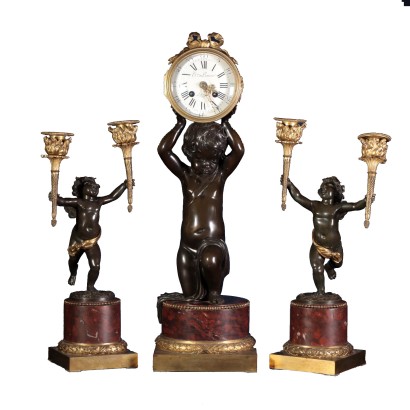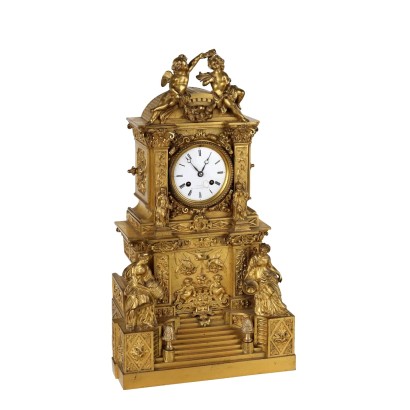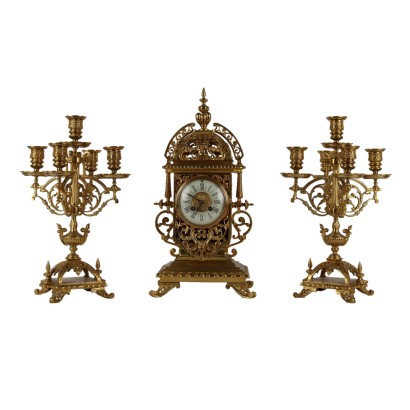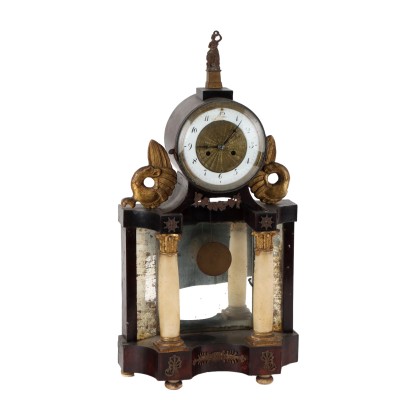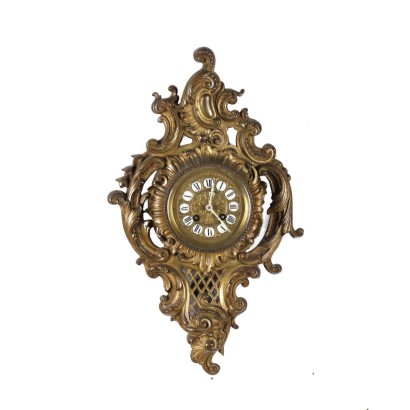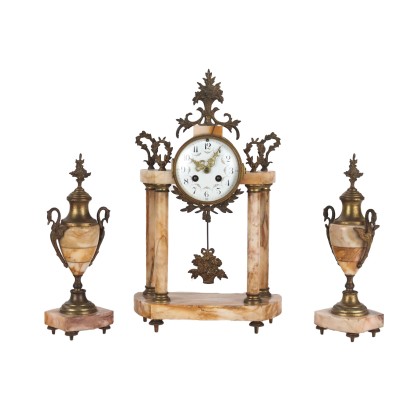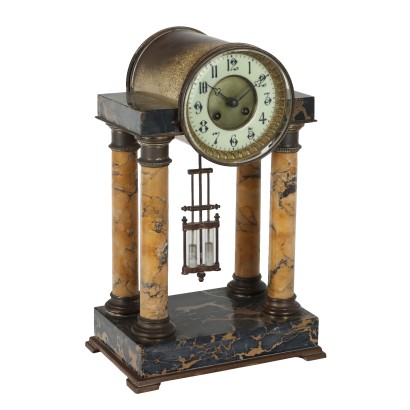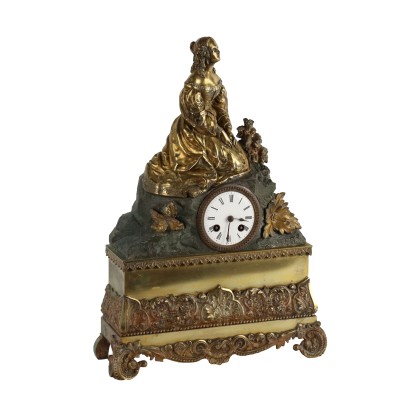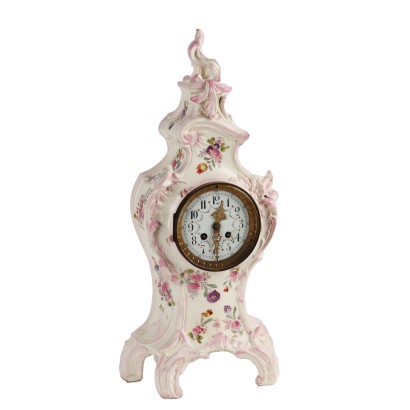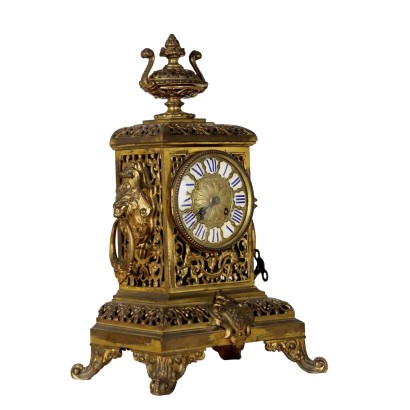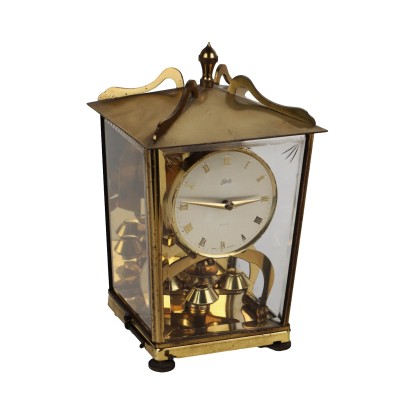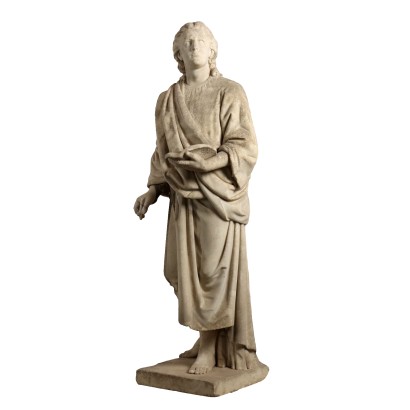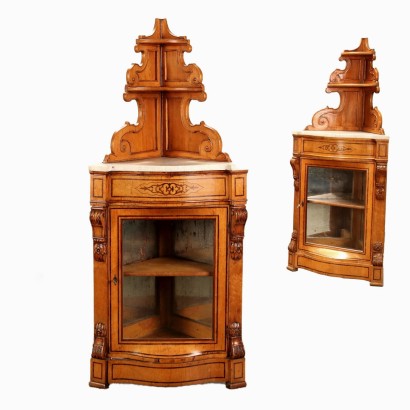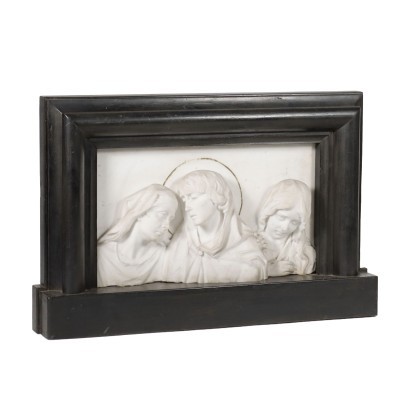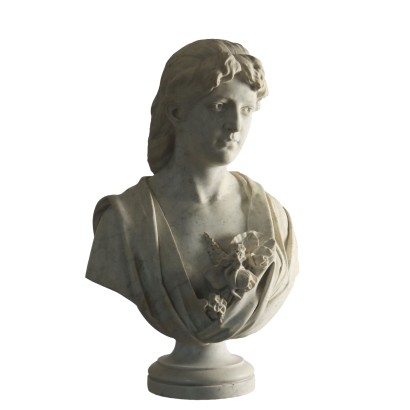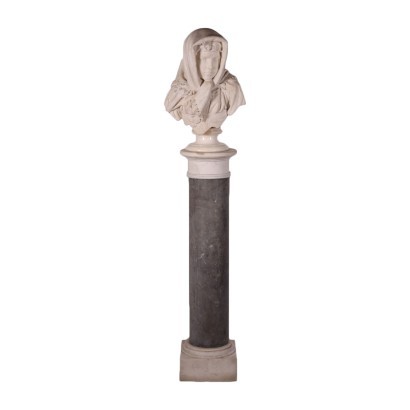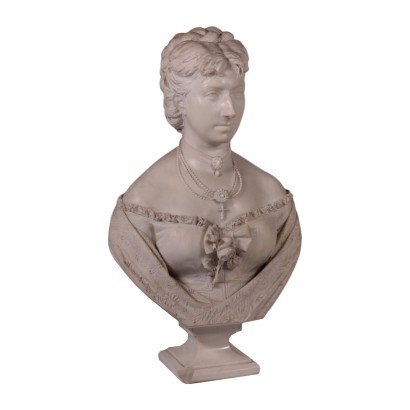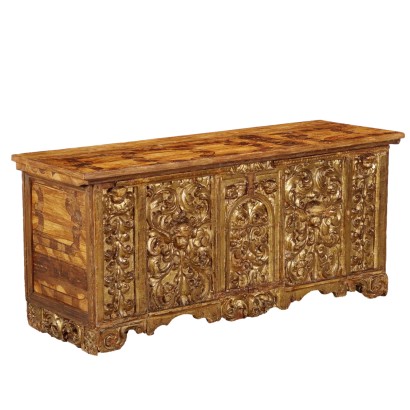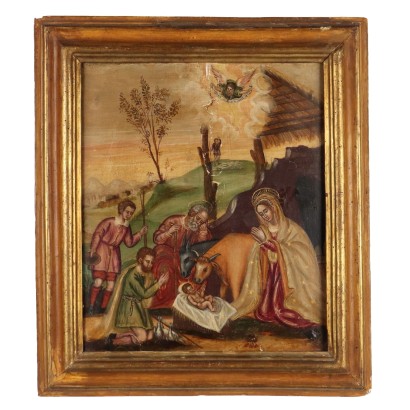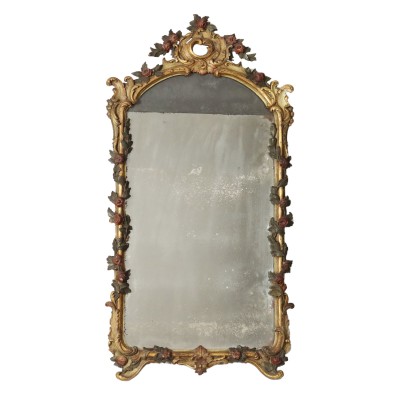Table CLock with Candlesticks Bronze France 19th Century - Etienne Lenoir Henry Dasson attributable to
Features
Etienne Lenoir Henry Dasson attributable to
Age: 19th Century / 1801 - 1900
Origin: France
Material: Bronze
Description
Table clock with bronze candlesticks. pierced decorations, plant patterns, garlands and festoons. Metal vise with roman numbers for hours and iron hands. Branded Japy Freres medaille d'honneur & C.ie. The candlesticks have 4 flames and are 43 cm high. Not coeval charging key.
Product Condition:
Object in good condition. Wear consistent with age and use.
Dimensions (cm):
Height: 55
Width: 15,6
Depth: 16,5
Additional Information
Notes historical bibliographic
The invention of the clock is by the French bronze artist Pierre Philippe Thomire (1757-1843), who was among the main Parisian founding masters between 1772 and the mid-twenties of the nineteenth century, when he retired from the business. The artist's project was purchased in 1813 by the Maison Breguet (the most important watch manufacturers in nineteenth-century Europe), as evidenced by the documentation preserved in the archive of the manufacture, which produced them in several copies. During the course of the century this invention was revived and translated into bronze by various artists, even of a certain fame, such as Henry Picard and Henry Dasson. The triptych in question is attributable to the latter: in fact, punctual and stringent comparisons are possible with other works entirely similar to those in question or which present variations, with a view to diversifying the artist's production. . The one that comes closest to ours is a triptych recently placed on the antiques market, in which the clock is identical to the one in question, with the exception of the bronze decoration on the case. The candelabra are different: they are always made up of small cherubs, but which support with both hands a flowering branch that acts as a candle holder. The base is completely identical, even in the type of marble used. The "pendule à l'enfant" certainly enjoyed great success in the Paris of those years, as evidenced by the derivations from the work of Dasson himself, recently auctioned. at Christie's together with a group, signed Henry Dasson. The putto holding two branches of roses finds a precise correspondence with one of ours (with the exception of the drapery around the hips), while the other is the mirror reproduction: the raised leg and the slender weight forward almost like in the heat of a race. The three bronzes that make up our triptych have a very high quality of casting, as also demonstrated by the attention with which the burin chiselling was carried out for details, in particular for the hair of the cherubs and for the candle holder torches. . Henry Dasson: (Paris 1825-1896), he was one of the leading Parisian bronzers of the 19th century, whose works are recognized for their decorative refinement and for the high quality of their bronze casting. After having a brief career in the manufacture of bronze artifacts and watches in association with the skilled designer Emile Godeau, Dasson studied with Justin Marie Lequien, a professor at the École Superieur Turgot. In 1871 he acquired the thriving business of cabinetmaker Charles-Guillaume Winckelsen, soon becoming himself a recognized and appreciated cabinetmaker and bronze maker. Specialized above all in the production of furniture and objects in the Louis XIV, XV and XVI style, his production was highly sought after and qualitatively appreciated to the point of allowing him to participate in the Parisian Exposition Universelle of 1878 and 1889, where the latter was awarded the Grand Prix Artistique. Awarded the title of Chevalier de la Légion d'honneur in 1883, Dasson ceased production of his manufacture in 1894, selling his models and designs at a massive auction held the same year. Dasson's production was very diversified both in the typology of the works (furniture such as tables, but also chandeliers, candelabra and clocks) and in the materials and techniques used: although his favorite was certainly the bronze casting, often in his articles there are also precious marbles. The Etienne Lenoir signature instead refers to a watchmaker active in the second half of the nineteenth century. For onomastic reasons it could have belonged to the famous family of watchmakers, which included Etienne II Lenoir (1699-1778) and his son Pierre-Etienne Lenoir (1724-after 1789), two of the most important watchmakers in Louis XV's Paris . Unfortunately, there is no further news of ours.Age: 19th Century / 1801 - 1900
19th Century / 1801 - 1900Material: Bronze
Other customers have searched:
Orologi, orologio dorato, orologio da camino, orologio da appoggio, orologio da tavolo, trittico, pendola, parigina..
Vuoi conoscere di più sugli orologi? Consulta i nostri articoli del blog e di FineArt che ne parlano:
Leggi di più
Le lancette degli orologi ci insegnano cos'è il traforo
Cartel Barat a Paris Orologio in bronzo dorato
Orologio Phippard Japanned Longcase, secondo quarto XVIII secolo Orologio a torre
Trittico con orologio e coppia di candelabri, Etienne Lenoir – Henry Dasson, Francia, seconda metà XIX secolo
Orologio Impero da appoggio
Orologio “Carro di Telemaco”
Orologio da mensola, Camillo Borghese, Torino, 1808 – 1814
Orologio a Vaso, Francia, Primo Quarto XIX Secolo
Orologio Impero a pendolo “Pegaso e Perseo” Lesieur à Paris, 1815 ca.
Leggi di più
Le lancette degli orologi ci insegnano cos'è il traforoCartel Barat a Paris Orologio in bronzo dorato
Orologio Phippard Japanned Longcase, secondo quarto XVIII secolo Orologio a torre
Trittico con orologio e coppia di candelabri, Etienne Lenoir – Henry Dasson, Francia, seconda metà XIX secolo
Orologio Impero da appoggio
Orologio “Carro di Telemaco”
Orologio da mensola, Camillo Borghese, Torino, 1808 – 1814
Orologio a Vaso, Francia, Primo Quarto XIX Secolo
Orologio Impero a pendolo “Pegaso e Perseo” Lesieur à Paris, 1815 ca.
Product availability
The product can be seen at Cambiago
Immediate availability
Ready for delivery within 2 working days from ordering the product.



